 There are many varieties of orchids, and almost each one has some peculiarities in care. Accordingly, the approach to the pruning procedure is also different. But it is needed in one form or another for almost all species. Therefore, it is important to know how to prune an orchid. If everything is done correctly, the plant will develop and bloom normally.
There are many varieties of orchids, and almost each one has some peculiarities in care. Accordingly, the approach to the pruning procedure is also different. But it is needed in one form or another for almost all species. Therefore, it is important to know how to prune an orchid. If everything is done correctly, the plant will develop and bloom normally.
Proper orchid care at home
It is important to correctly determine the time when it is necessary to shorten the peduncle. Even at the flowering stage near the end, he may become waxy... This is one of the signs that it is coming to an end.
The flowering time of an orchid depends on the species, but it usually lasts from 2 months to half a year. There are varieties that bloom several times a year. Phalaenopsis can be attributed to them. When in doubt about the exact timing of pruning, it is safest to choose the period October-November.
Many can bloom and buds often appear on the bud of an old peduncle. Therefore, when the plant has faded, it is wiser give it a little time to stand... If the arrow dries completely, you can safely cut it. So, when the flowering is over, there may be several options for the development of events:
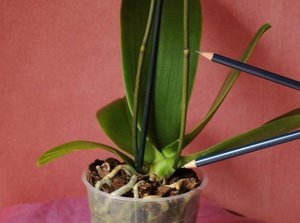 The peduncle has completely dried up, turned brown, then it is advised to cut it off;
The peduncle has completely dried up, turned brown, then it is advised to cut it off;- When the arrow is not completely dry, it is better to wait with pruning. It can supply the plant with various nutrients. If you remove it too early, then the flower will need more time to recover and such an orchid will bloom in at least six months;
- There are buds on the arrow of the peduncle. If its tip is still green, then it is better to wait with pruning. Perhaps the next orchid bloom.
Another option is when the arrow of the peduncle withers little by little, but the dormant buds of the plant have swollen. How to prune an orchid in this case? You can shorten the peduncle just above the bud or to the green part. But of course, there is no guarantee that the buds will bloom on it.
Most often, re-flowering is observed in the phalaenopsis orchid. Nevertheless, in other species, until the peduncle has dried up, there is a possibility that the plant will bloom again. But many experienced flower growers believe that this weakens the orchid, because it need time to rest.
However, it is also important to take into account the characteristics of a particular plant species. There are varieties that can only be cut when their stems are brown. And other types of orchids that bloom several times a year should be cut off immediately after the flowers wither.
When purchasing an orchid, it is better to check with the seller about its appearance. Perhaps he will even advise when and how to properly prune an orchid of this particular variety. It will also be useful to watch a video on how to properly crop.
Pruning procedure
It is important to remove only wilted parts so that all the forces of the orchid are directed to new shoots. Also, in no case should it be disturbed or cut until it has bloomed to the end, this can destroy the plant.
When forming a peduncle, the main thing is not to damage the plant. There are two ways to trim:
- The peduncle is shortened partially above the sleeping bud, about 1.5 cm above it;
- Cut at the base, leaving a stump with a height of about 2.5-3 cm.
But there is one caveat: by cutting off the peduncle above the sleeping bud, you can slow down the growth of new stems. Because the orchid will spend energy on the development of the formed buds.
What is needed to prune an orchid at home? Better in advance buy a garden pruner... He least of all injures the plant, does not touch the leaves, does not leave burrs. And they can get microbes that will lead to plant diseases. It is undesirable to use ordinary scissors or a knife, they can easily damage the orchid.
Immediately before the procedure, the pruner must be disinfected. A bleach solution is quite suitable for this. You can also wipe it with alcohol or lower the blades in boiling water and hold for a while. They do this so as not to infect the plant. You can always watch the video on how to trim an orchid.
After the procedure, the cut site is treated with crushed activated carbon, iodine, brilliant green or cinnamon... Some orchids have a hollow stem inside. When watering, water will get into it, and it can rot. And then the disease will spread to the whole flower. So it is better to close the cut on such a stem with beeswax.
How to care after pruning
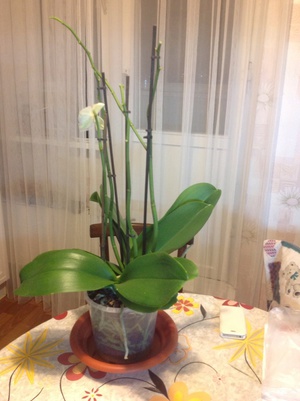 Since the shortening of the peduncle is stress for the plant, it is better not to disturb it for a while. And later, the orchid needs almost the same care as before flowering. Water it in moderation.so that the substrate has time to dry out, spray the leaves and soil from the spray bottle. But the fertilizer is better to cut.
Since the shortening of the peduncle is stress for the plant, it is better not to disturb it for a while. And later, the orchid needs almost the same care as before flowering. Water it in moderation.so that the substrate has time to dry out, spray the leaves and soil from the spray bottle. But the fertilizer is better to cut.
At this time, many orchids have a dormant time. She needs it for recovery, replenishment of energy reserves before the new growing season. The resting time of a plant depends on the species, but it usually lasts about 2 months, sometimes a little more or less. During this period, it is important:
- Observe the correct temperature regime. Optimal daytime t is no more than 24 ° C, night t is about 16 ° C;
- Reduce watering of the plant;
- Do not fertilize the orchid;
- It is advisable to keep it away from any heating appliances;
- The plant must be provided with diffused lighting.
If the procedure was carried out in the summer, the orchid must be shaded from the direct sun. You can block it with curtains or use matte film... The main thing is that she does not get leaf burns. But you should not completely deprive her of sunlight. After all, this plant is tropical.
When it blooms again after pruning, it depends primarily on its variety. This can be in a few months, and in other cases it takes a year to wait for flowering.
Transfer
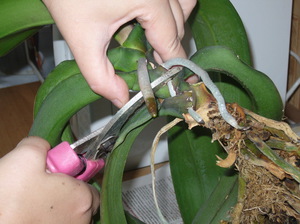 Often, after pruning, it may be necessary to transplant the orchid into fresh substrate. It is better to choose a new container for it of a larger size. When the plant is removed from the pot, the roots must be rinsed well with warm water. Then examine them and all dry, brittle brown parts shorten to healthy tissue... And treat the sections with an antiseptic. This measure will heal the root system.
Often, after pruning, it may be necessary to transplant the orchid into fresh substrate. It is better to choose a new container for it of a larger size. When the plant is removed from the pot, the roots must be rinsed well with warm water. Then examine them and all dry, brittle brown parts shorten to healthy tissue... And treat the sections with an antiseptic. This measure will heal the root system.
The substrate can be used ready-made specifically for orchids by purchasing it from the store. You can do it yourself. A mixture of bark, moss, peat and coarse sand is suitable for this. Expanded clay or foam is placed at the bottom of the pot as a drainage layer. The bark in a pot is laid in layers from the bottom, large, then medium, and small on top. It is important not to sprinkle leaves or growth points, so as not to provoke their rotting.
The correct choice of soil is a very crucial moment. Therefore, if there is little experience in breeding orchids, it is best to use a special ready-made substrate from the store. Because when the orchid does not fit the soil, it can simply wither away.
Watering after transplanting is necessary after a few days. The plant needs this time to adapt to new ground... And to maintain the desired level of humidity, you can spray the leaves or purchase a humidifier.
After flowering, new shoots (babies) are often formed on the orchid.This happens, as a rule, in the summer, that is, at a sufficiently high air temperature. In this case, you need to wait until they take root, and then carefully cut them off with part of the peduncle. Then the children are transplanted into separate pots.
Do not neglect plant transplanting. In the absence of proper care, the entire root system can rot in an orchid. Such a plant can recover within several years.
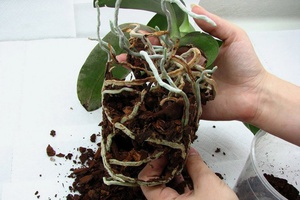 How to trim phalaenopsis? It is one of the most common home grown species. He is considered the least whimsical. But what if the orchid has faded, and the peduncle is still alive? Phalaenopsis may bloom several times in a row and the peduncle does not dry out, that is, the orchid may well continue to bloom again and again.
How to trim phalaenopsis? It is one of the most common home grown species. He is considered the least whimsical. But what if the orchid has faded, and the peduncle is still alive? Phalaenopsis may bloom several times in a row and the peduncle does not dry out, that is, the orchid may well continue to bloom again and again.
Is it worth it? This often weakens the plant, its branches become thin, stretched out. In this case, you need to guess the moment when it has faded again and shorten it by 2/3, leaving about 6 mm above the developed kidney so that it does not dry out. This technique will help the plant to form new shoots.
It is better to spare no effort and time to care for the orchid. Pruning, like other procedures, is necessary for its full development, and a well-groomed plant will surely thank you with excellent flowering.
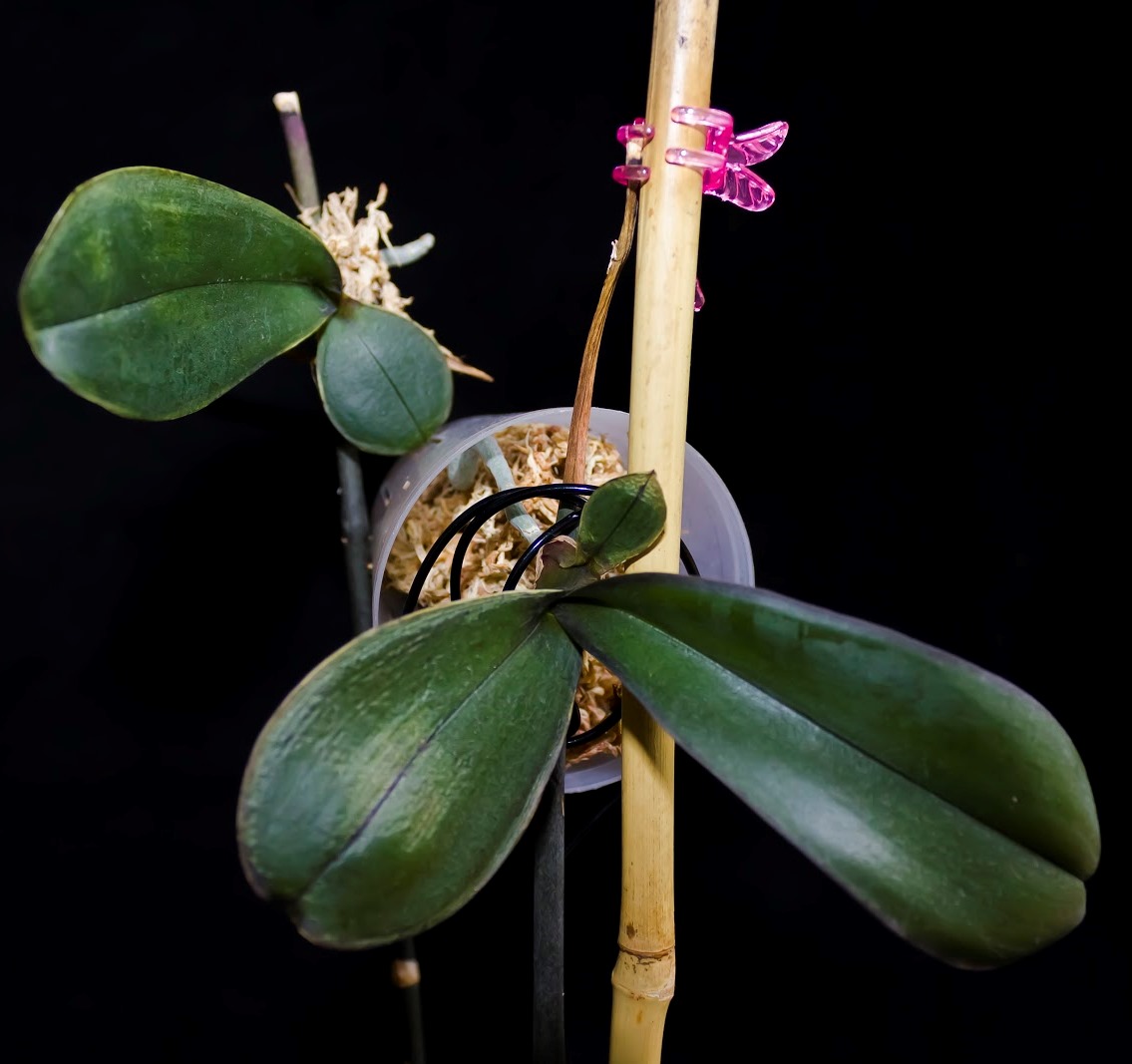
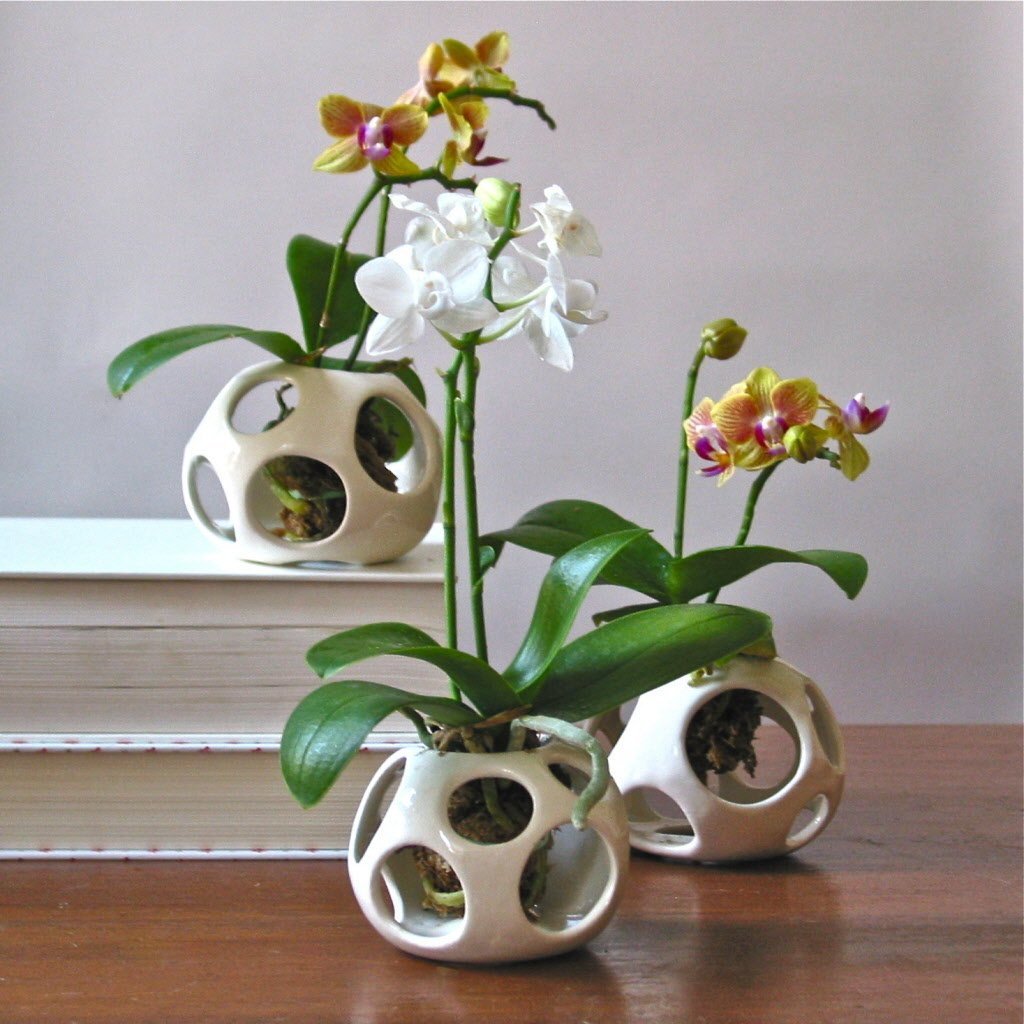
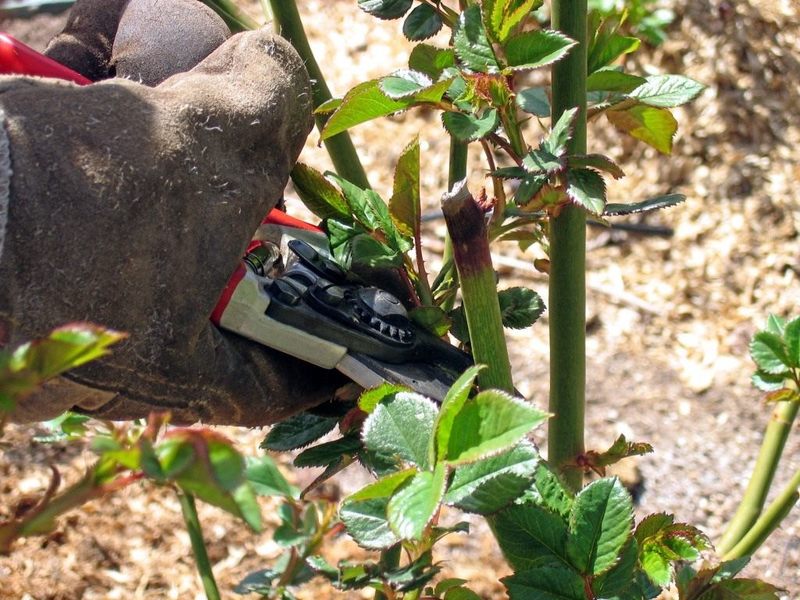
1 comment